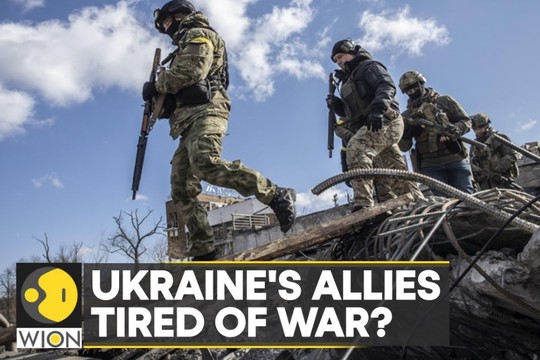The viability of the Ukrainian state could well rest upon the results of this offensive. What obviously concerns Kyiv is that if the offensive fails, they could lose the war. What should worry Ukraine’s leaders the most, however, is that Ukraine could win this offensive battle, but as a result, lose the war anyway, stresses Daniel L. Davis, a former Lt. Col. in the U.S. Army, who deployed into combat zones four times.
Ukraine is widely reported to be in the final stages of preparing for a spring offensive against Russia. Whether it ends in success or failure, this will likely mark Ukraine’s last chance to launch a large-scale offensive operation for a half year or more. This is true regardless of how many NATO weapons and ammunition are subsequently delivered.
After this operation, Ukraine will have expended the majority of its remaining Western-trained and experienced combat formations. Russia, on the other hand, still has substantial manpower resources from which to draw, as well as an industrial capacity that is producing war material now and will increase its output over time. This assessment stands in stark contrast to what many military experts have led Western publics to believe.
It is debatable how much NATO weapons and quick training can improve Ukraine’s offensive capacity, but even if the improvement is as notable as advertised, few Western analysts have addressed the most crucial question: What comes after the offensive?
Succeed or fail, what will the balance of power between the two sides look like, and what could be reasonably expected in the next phase? Too few analysts consider the context of any given action. The tendency is to consider any given offensive in isolation, as though the winner or loser of a given campaign will be the winner or loser of the conflict. That’s not how war works.
The viability of the Ukrainian state could well rest upon the results of this offensive. What obviously concerns Kyiv is that if the offensive fails, they could lose the war.
Math is one of the primary culprits: At battle’s end, Ukraine will have spent its last remaining force with which to conduct offensives. The Washington Post recently revealed that Ukraine has already lost the vast majority of the trained and equipped army that NATO helped it create prior to February 2022. The counteroffensives in Kherson and Kharkiv last fall came at a premium cost paid by the UAF’s best troops.
Ukraine, with a population a quarter the size of Russia’s, is already scraping the bottom of the barrel for mobilization. With the launch of a major offensive, the UAF would naturally lose even more of its trained and experienced troops, and the overall casualty rate would be high, win or lose.
Add to the manpower issue the fact that Russia’s domestic military industrial capacity is rapidly expanding to produce weapons and ammunition that could exceed what the cumulative West can provide to Ukraine in the medium term.
Ukraine, therefore, may not be able to win the war, even after a successful offensive, writes Daniel L. Davis.
read more in our Telegram-channel https://t.me/The_International_Affairs

 10:24 29.04.2023 •
10:24 29.04.2023 •























